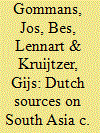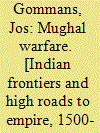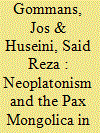|
|
|
Sort Order |
|
|
|
Items / Page
|
|
|
|
|
|
|
| Srl | Item |
| 1 |
ID:
047007


|
|
|
|
|
| Publication |
New Delhi, Manohar Publishers and Distributors, 2001.
|
| Description |
424p.
|
| Contents |
Vol. 1: Bibliography and archival guide to the national archives at the Hague (The Netherlands)
|
| Standard Number |
8173043701
|
|
|
|
|
|
|
|
|
|
|
|
Copies: C:1/I:0,R:0,Q:0
Circulation
| Accession# | Call# | Current Location | Status | Policy | Location |
| 044508 | 015.492054/GOM 044508 | Main | On Shelf | General | |
|
|
|
|
| 2 |
ID:
057606


|
|
|
|
|
| Publication |
London, Routledge, 2002.
|
| Description |
xv, 268p.: ill., maps, abbre.hbk
|
| Series |
Warfare and History
|
| Standard Number |
0415239885
|
|
|
|
|
|
|
|
|
|
|
|
Copies: C:1/I:0,R:0,Q:0
Circulation
| Accession# | Call# | Current Location | Status | Policy | Location |
| 046234 | 954.025/GOM 046234 | Main | On Shelf | General | |
|
|
|
|
| 3 |
ID:
184157


|
|
|
|
|
| Summary/Abstract |
This article argues that ṣulḥ-i kull (peace for all) as a specific term was introduced in the 1590s by a small group of avant-garde Neoplatonists who worked at the court of the Mughal emperor Akbar. It was only in the following century that ṣulḥ-i kull developed into the ethos that became the ideological mainstay of Mughal rule both internally, for its administrative elites, and externally, vis-à-vis their main rivals: the Uzbeks in Central Asia and the Safavids in Iran. The early stages in the making of this ideology can be followed in some detail by studying Akbar's neglected millennial history, the Tarikh-i Alfi. In fact, this vast Mughal world history demonstrates that apart from Neoplatonic akhlāq, there was another important building block that so far has been missing altogether in the making of ṣulḥ-i kull, that is, the practical model of the Pax Mongolica, as established under Chinggis Khan, the most famous of Mughal ancestors. Most crucially, it is in the Tarikh-i Alfi that we find the legacies of Persianate akhlāq and Mongol yasa (law) married to each other. In fact, it was through akhlāq that the peace of the Mongols became the Mughal peace for all.
|
|
|
|
|
|
|
|
|
|
|
|
|
|
|
|
|
|
|
|
|